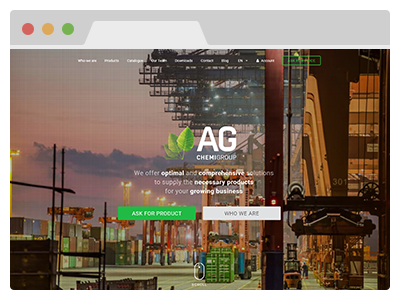“There is not a great future in chemicals,” declared a recent article in the respected British newspaper, the Financial Times.
To explain this surprising news, the article continued, “If there was a future, then companies such as Dow Chemical, DuPont, Evonik and ChemChina would not be involved in a series of mergers, the biggest wave of restructuring since conglomerates spun off their pharmaceutical divisions in the 1990s.”
“Chemical industry growth and innovation” it added, “are in short supply.”
While at first glance this opinion may seem like pure pessimism, the author, London-based journalist John Gapper, is associate editor and chief business commentator at the Financial Times, and he is not alone in his thinking. Because a March 2017 report by industry consultants McKinsey painted an equally depressing picture, stating that, “[The Chemical industry’s] golden era may be coming to an end … not only have chemicals lagged the total stock market since 2011 in Total Returns to Shareholders (TRS) performance but the industry’s return on invested capital (ROIC) performance has flattened, and for some chemical subsectors, decreased.”
Like Gapper’s FT article, the report believed that there was a little creativity in the chemical industry, stating that, “Innovation to develop new differentiated—and thus specialty—products has become a game of inches. With the exception of innovative crop protection, we would be hard pressed to name a single chemical blockbuster developed in the last ten years.”
In an industry built on the development of new and exciting products, the thought that very few new chemicals are being made is extremely worrying. However, creativity costs, and the chemical industry’s lack of innovation is due to rising expenditure.
Client Zone – Stay in Touch with All the Important Information

Take the opportunity to register in our client zone to find complete product specifications and the latest updates on special offers.
Client Zone Sign Up
As Kurt Bock, CEO of BASF informed the Economist in May 2017, “The average cost of developing a new active substance has shot up from $150m in 1995 to over $500m in Europe today; most of that goes on testing for safety. Over the same period, the number of potential compounds that have to be synthesised and tested for each new substance, in case they are harmful, has risen from 50,000 to over 140,000, a process that can take as long as a decade.”
This is a point supported by the Chemical Industry analysts at Chemservice, who in June 2017 noted that poor industry growth had led to the current wave of mergers. Observing that, “[There is] enough evidence to suggest that at least some of these [chemical industry] mergers have not stemmed from a desire to expand on the part of corporations, but rather from the necessities of the market.
Throughout the European Union, regulations affecting everything from pesticides used to process compliance are tightening, and in a tangentially related fashion, development and testing are also becoming much more costly.”
These rising overheads encourage mergers and acquisitions. As testing takes so long, innovative chemical companies need to be big enough to be able to afford several experimental projects at the same time, in order to keep a constant revenue flow. As Bock states, “To account for longer and more costly development cycles, firms need enough financial heft to be able to have more projects on the go.”
But while the mergers may be logical in trying to increase innovation, there is evidence that the mergers are merely ‘papering over the cracks’ of bigger problems.
These problems stretch beyond the idea that there is a lack of new ideas, as there is significant evidence that the chemical industry is experiencing a period of slowing down. A fact highlighted in a recent interview, where P.J.Juvekar of Citigroup, told the Economist, “In the 2000’s sales expanded at a rate of 6-7% a year, but last year the industry grew by just 2%, with demand from China very weak.”
A chemical company that is facing trouble in the sales department or on the factory floor, can delay the oncoming industry recession with a merger deal in the boardroom. Because when real growth is limited, the best way to expand can often be through mergers and acquisitions. Mergers often bring synergies and job cuts that increase profits, despite falling sales.
But Gapper paints an even gloomier picture for the chemical industry. A future that is based less on chemicals and more on banking and finance, as he highlights how the ‘aggressively activist’ American hedge fund, Third Point, is increasingly involved in the Dow Chemical / DuPont merger.
His Financial Times article outlines how in the original plan DowDuPont would be split into three separate parts, but that has now all changed as Third Point wants a larger, more complex division.
He notes, “The options range from placing thousands of products within a single corporate entity to putting bundles of them into their own enterprises. This promises plenty of work for consultants and bankers, merging and dividing companies long into the future. It is only a means to an end for hedge funds, though; the underlying purpose of Third Point’s intricate restructuring is that it wants Dow and DuPont to hand $40bn back to their shareholders within two years of merging.”
“Banking establishments are more dangerous than standing armies,’ wrote Thomas Jefferson in 1816, and the chemical industry of the next decade may prove him right.
For beyond the cheery thought that our world needs the chemical industry, it is not chemical sales or chemical product demand that will determine the industry’s success. Instead, it may be the lawyers and legislators that cripple innovation, or the money men from Wall St. and Shanghai that will decide the health of the chemical industry.
Photo credit: Wikipedia/DC Comics, BASF/Steamcracker, John Gapper & YouTube